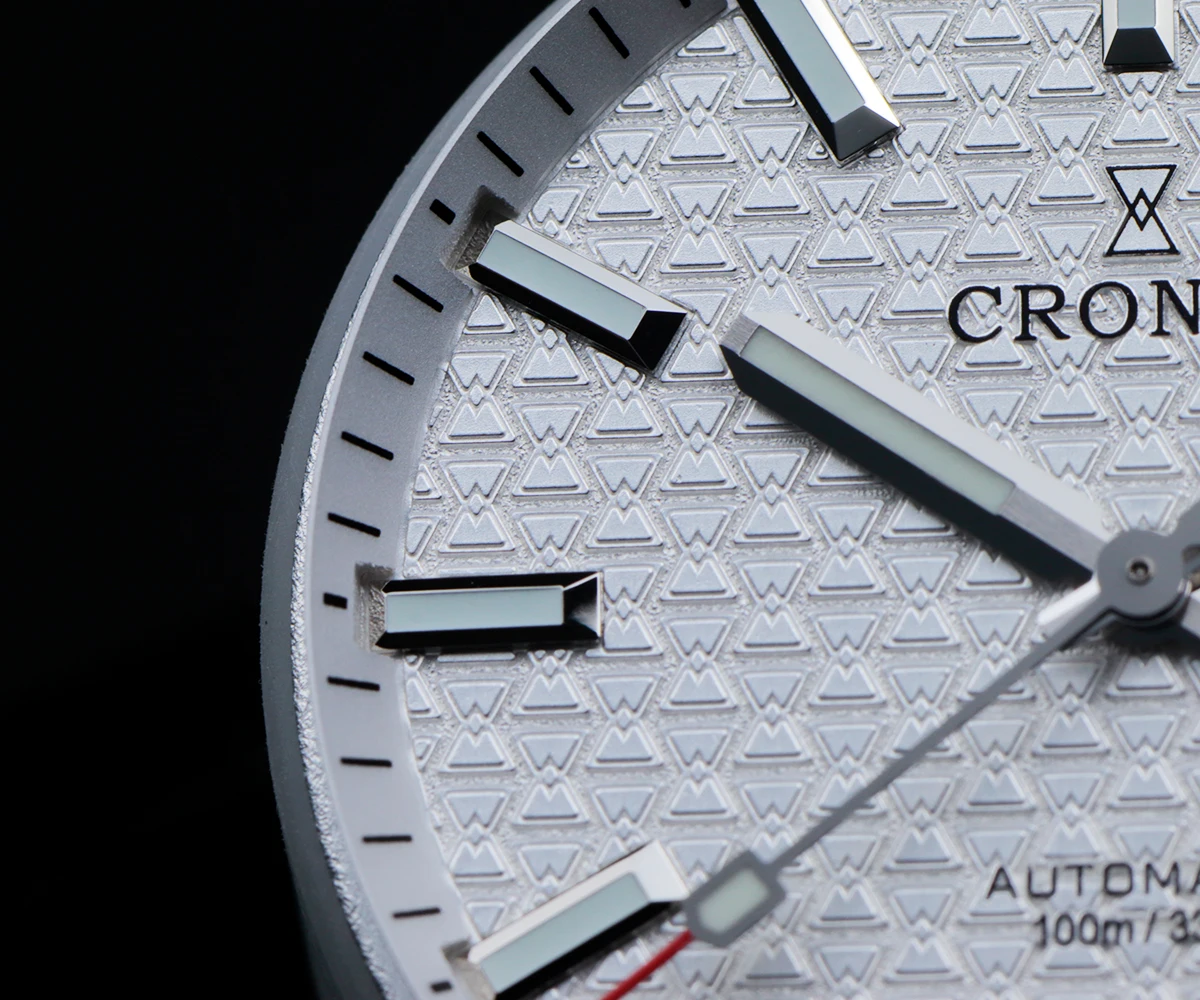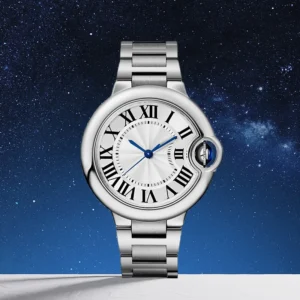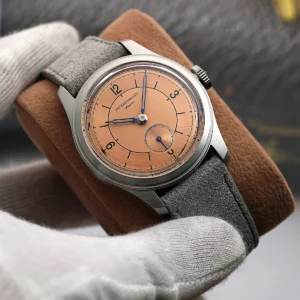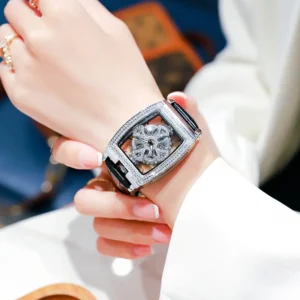Understanding the Essence of Dress Watches: A Brief Introduction
Dress watches represent the epitome of horological elegance. These timepieces are characterized by their slim profiles, refined aesthetics, and understated sophistication that complement formal attire. Unlike their sportier counterparts, dress watches prioritize elegance over functionality, focusing on clean design and proportional harmony rather than robust features.
The journey of dress watches began with the transition from pocket watches to wrist-worn timepieces in the early 20th century. What started as a practical adaptation for military officers soon evolved into an essential accessory for the well-dressed gentleman. These early wristwatches maintained the refinement of pocket watches while embracing a new form factor that would eventually define modern watch design.
Today’s dress watches generally fall into two distinct aesthetic categories: classic and minimalist. Classic designs embrace traditional elements with rich detailing and historical reverence, while minimalist approaches strip away excess to focus on essential elements and clean lines. Both styles maintain the fundamental principles of dress watches—elegance, slimness, and versatility—but express these qualities through different design languages.
Choosing between classic and minimalist dress watches ultimately becomes a question of personal style, occasion appropriateness, and individual expression. The right dress watch should feel like a natural extension of your personality while elevating your appearance in formal and business settings.
The Essence of Dress Watches
A true dress watch features a slim case, clean design, and minimal complications. It should slide easily under a shirt cuff, offer excellent legibility, and provide subtle sophistication that complements rather than dominates formal attire.
Understanding the design evolution of formal watch styles helps appreciate how both classic and minimalist approaches developed, while exploring automatic dress watches reveals how these principles are expressed in contemporary timepieces.
At a Glance: Essential Differences Between Classic and Minimalist Dress Watches
When comparing classic and minimalist dress watches, several key distinctions immediately become apparent. These differences extend beyond mere aesthetics to encompass design philosophy, functional elements, and historical context.
| Feature | Classic Dress Watches | Minimalist Dress Watches |
|---|---|---|
| Overall Aesthetic | Ornate, detailed, traditional | Clean, sparse, contemporary |
| Dial Design | Complex with textures (guilloché, sunburst) | Simple with matte or subtle finishes |
| Hour Markers | Roman numerals or elaborate applied indices | Slim stick markers or simple dots |
| Hands | Elegant dauphine, leaf, or Breguet-style | Straight batons or needle-shaped |
| Case Profile | Traditionally round, 36-40mm diameter | Various shapes, often 34-40mm diameter |
| Typical Thickness | 7-11mm | 6-9mm |
| Complications | Date, small seconds, moon phase | Often none, sometimes simple date |
| Materials | Traditional precious metals, high-polish steel | Steel, titanium, with brushed finishes |
| Historical Reference | 19th and early 20th century | Mid-20th century modernist movements |
| Ideal Occasions | Formal black-tie events, traditional settings | Business casual to formal, contemporary settings |
The fundamental distinction lies in their approach to elegance. Classic dress watches achieve sophistication through refined detailing and traditional craftsmanship, embracing horological heritage. Every element—from the sculpted hands to the carefully executed dial patterns—demonstrates meticulous attention to detail.
Minimalist dress watches, by contrast, find elegance in restraint and proportion. They eliminate unnecessary elements to focus on perfect balance and clean design. This contemporary approach values negative space and thoughtful simplicity rather than decorative flourishes.
The visual guide to dress watch styles offers additional comparative imagery that highlights these differences, while exploring watch features and complications provides deeper insight into the functional distinctions between these two approaches.
The Anatomy of a Classic Dress Watch: Elegance in Details
Classic dress watches derive their charm from meticulous attention to detail and adherence to traditional design codes. These timepieces celebrate horological heritage through refined execution of established elements:
Cases: Predominantly round with polished finishes, slim bezels, and modest diameters (typically 36-40mm). The profile remains deliberately thin (7-11mm) to maintain elegance and ensure comfort under shirt cuffs.
Dials: Rich in detail and texture, often featuring:
- Guilloché patterns (intricate, symmetrical engravings)
- Sunburst or radial brushing
- Applied hour markers with polished facets
Carefully balanced proportions respecting traditional design ratios
Numerals and Indices: Roman numerals with serif styling or elegant Arabic numerals. Applied metal indices often feature diamond-polished facets that catch light beautifully.
Hands: Meticulously crafted in traditional styles:
- Dauphine (tapered with center ridge and polished facets)
- Leaf-shaped (curved with pointed tips)
- Breguet-style (eccentric circles near the tips)
Blued steel for traditional contrast against light dials
Complications: When present, they remain subtle and classically executed:
- Small seconds subdials (often at 6 o’clock)
- Simple date windows (sometimes with frames)
Moon phases on more elaborate models
Straps: Fine leather, particularly alligator or crocodile-patterned, with traditional tang buckles or elegant deployant clasps.
The classic dress watch embraces the concept that beauty lies in refined execution rather than innovation. Each element adheres to established design codes refined over centuries of watchmaking tradition. The appeal comes from the harmony between these elements and the quality of their execution—polished hands catching the light at different angles, applied markers creating subtle depth, and dial patterns revealing new details under changing light conditions.
Exploring classic automatic dress watches reveals how contemporary watchmakers interpret these traditional elements while maintaining their elegant essence.
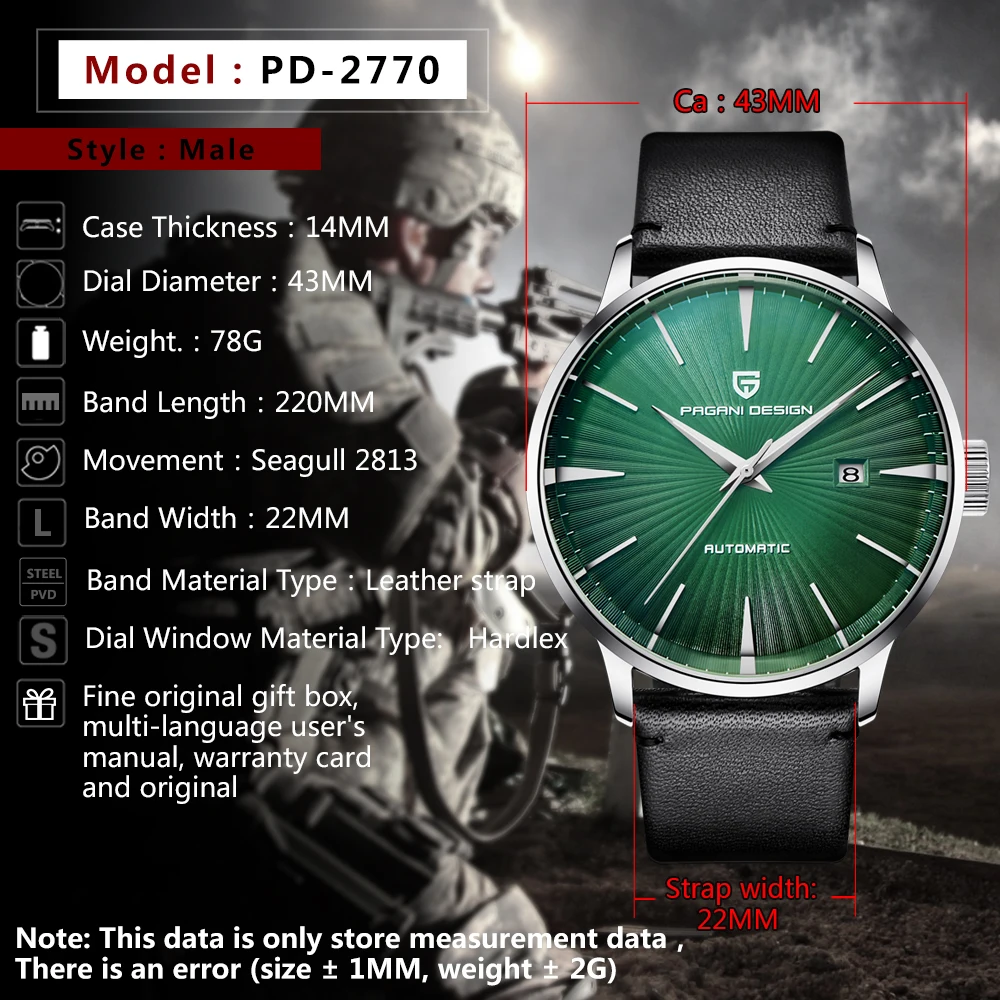
The Philosophy of Classic Dress Watch Design: Tradition and Heritage
Classic dress watch design is firmly rooted in horological traditions that stretch back through centuries of watchmaking heritage. These timepieces don’t merely tell time—they tell stories of craftsmanship, continuity, and cultural significance.
The design philosophy behind classic dress watches embraces several key principles:
Respect for Tradition: Classic designs acknowledge their predecessors, maintaining design elements that have proven their aesthetic merit over generations. The curved lugs, proportional dials, and traditional hand styles aren’t simply aesthetic choices—they’re respectful nods to watchmaking lineage.
Celebration of Craftsmanship: The detailed execution seen in classic dress watches—from hand-finished movement components to meticulously applied dial markers—celebrates human skill and patience. The intricate guilloché patterns often featured on dials required master engravers who spent years perfecting their technique, creating patterns that catch light in mesmerizing ways.
Formality and Occasion: Classic dress watches emerged from an era when specific watches were worn for specific occasions. Their design language developed alongside formal dress codes, explaining their emphasis on refinement and understatement. The slim profile allowed them to slip easily under starched shirt cuffs, while their elegant appearance complemented formal attire.
Expression of Status and Taste: Historically, fine timepieces served as subtle indicators of social standing and personal refinement. Classic dress watches continue this tradition, with their value often lying in discreet details appreciable mainly to knowledgeable observers rather than obvious statements.
Emphasis on Permanence: Rather than chasing trends, classic design embraces timeless appeal—creating pieces intended to be passed down through generations rather than replaced with each fashion cycle. This approach values enduring beauty over momentary impact.
The appreciation of classic dress watch and minimalist styles helps understand how these traditional designs have maintained relevance through changing fashion eras, while examining distinct features of dress watches reveals how these philosophical principles manifest in physical characteristics.
Signature Examples of Classic Dress Watches Worth Considering
Classic dress watches exemplify timeless design principles through meticulous execution of traditional elements. Here are several noteworthy examples that embody the essence of classic dress watch aesthetics:
The Distinguished Traditionalist
This exemplary timepiece features a silvered dial with intricate guilloché pattern radiating from the center, creating a mesmerizing play of light. Applied Roman numerals in polished gold tone mark the hours, while elegantly proportioned dauphine hands sweep across the dial. At 39mm in diameter and just 9mm thick, this watch maintains perfect proportions for formal wear, complemented by a rich brown alligator-pattern leather strap.
Key Features:
– Automatic movement with 38-hour power reserve
– Domed sapphire crystal
– Exhibition caseback revealing decorated movement
– Water-resistant to 30 meters
The Elegant Classicist
With its opaline champagne dial and applied faceted indices, this 38mm dress watch exudes understated refinement. Blued steel hands provide striking contrast against the warm dial, while a subtle date window at 3 o’clock adds functionality without disrupting the balanced aesthetic. The polished stainless steel case measures just 8.5mm in thickness, ensuring comfort and elegance.
Key Features:
– Self-winding mechanical movement
– Sapphire crystal with anti-reflective coating
– Genuine leather strap with deployant buckle
– 50-meter water resistance
The Refined Formalist
This 36mm dress timepiece embraces classical proportions with its modestly sized case and thin bezel that maximizes dial presence. The silver sunburst dial features delicate printed hour markers and a subtle railway minute track. Leaf-shaped hands add a touch of vintage elegance, while the small seconds subdial at 6 o’clock provides visual interest and respects watchmaking tradition.
Key Features:
– Hand-wound mechanical movement
– Box-shaped sapphire crystal
– Genuine crocodile leather strap
– Elegant presentation box included
Exploring manual wind dress watches offers additional examples of how traditional winding mechanisms complement the classic dress watch aesthetic.
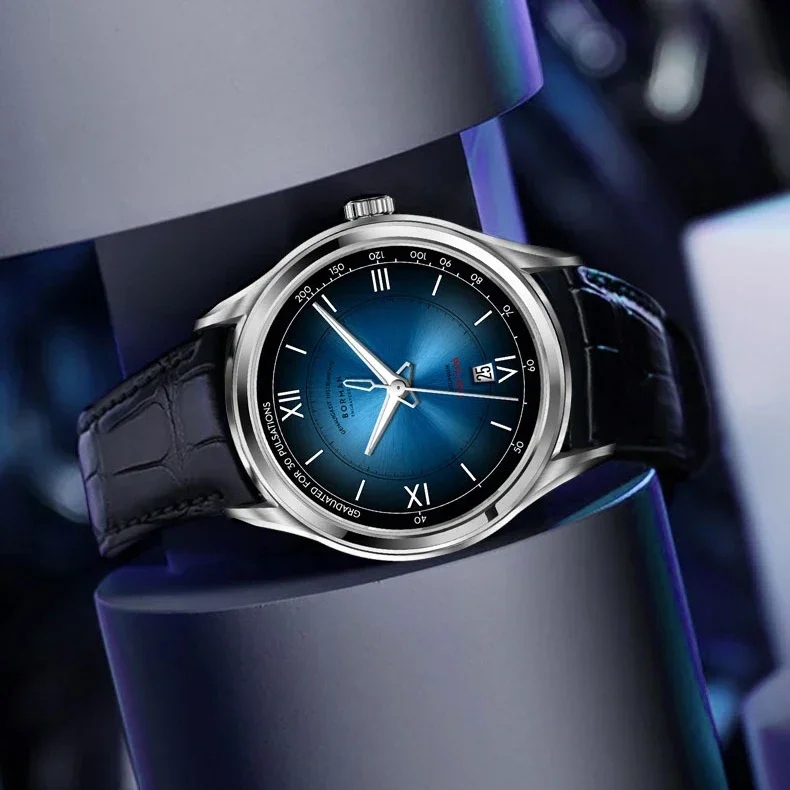
The Anatomy of a Minimalist Dress Watch: Refined Simplicity
Minimalist dress watches embody sophistication through restraint, focusing on perfect proportions and clean design rather than decorative elements. Their distinctive features include:
- Dials: Clean and uncluttered, often featuring:
- Abundant negative space (empty areas)
- Single-tone finishes (matte, sunburst, or subtle texture)
- Minimal text and branding
Perfect proportional balance between elements
Hour Markers: Simplified to essential forms:
- Straight line indices or “stick” markers
- Simple dots or small geometric shapes
- Occasionally slim Arabic numerals without serifs
Often applied rather than printed for subtle dimension
Hands: Straight and functional:
- Baton-style (straight with blunt ends)
- Needle hands (long and thin)
- Minimal differentiation between hour and minute hands
Often in monochromatic scheme matching case or markers
Cases: Precision-engineered with attention to proportion:
- Ultra-slim profiles (typically 6-9mm)
- Various shapes (round, cushion, rectangular)
- Narrow bezels to maximize dial space
Clean lines with minimal decoration
Complications: Avoided or extremely subtle:
- Often “no-date” designs for perfect symmetry
When present, date windows are discreet and integrated
Straps: Simple leather with minimal stitching or mesh bracelets with clean integration to the case.
Creating effective minimalist design is deceptively challenging. Without decorative elements to distract the eye, every proportion must be perfect. The relationship between hands and markers, the exact width of the bezel, and the precise spacing of elements become crucial when there’s nothing to hide behind. This approach demands rigorous attention to balance and harmony.
The technical challenge of ultra-thin cases further complicates minimalist watch design. Achieving a 7mm or thinner profile requires significant engineering to accommodate the movement while maintaining structural integrity and water resistance.
Exploring the definitive guide to minimalist dress watches reveals how these principles are applied across different brands and price points, while browsing minimalist automatic watches showcases how these designs are executed in contemporary timepieces.

The Philosophy of Minimalist Watch Design: Intentional Simplicity
Minimalist watch design draws inspiration from influential 20th-century design movements that prioritized function, clarity, and honest expression of form. This philosophy extends far beyond merely removing elements—it represents a comprehensive approach to design focused on essence rather than embellishment.
The Bauhaus movement, with its mantra of “form follows function,” provides perhaps the strongest influence on minimalist watch design. Founded in 1919, this German design school rejected unnecessary ornamentation in favor of clean lines and rational design. Many minimalist watches directly reference Bauhaus principles through their simple geometric forms, clear typography, and uncluttered dials.
Scandinavian design principles—emphasizing clean lines, natural materials, and functional beauty—further shaped the minimalist watch aesthetic. This influence appears in the warm minimalism many contemporary watches adopt, avoiding the coldness that extreme simplicity might otherwise create.
The “less is more” principle, famously articulated by architect Ludwig Mies van der Rohe, perfectly captures the minimalist watch philosophy. By removing everything non-essential, these designs achieve clarity of purpose and timeless appeal. However, there’s an important distinction between thoughtful minimalism and empty design. True minimalist watches don’t simply remove elements—they carefully consider what remains, ensuring each component serves both functional and aesthetic purposes.
This approach often creates watches with exceptional legibility. Without decorative elements competing for attention, the time-telling function takes center stage. The eye immediately finds the hands against an uncluttered backdrop, making these watches supremely functional despite their stylish appearance.
Contemporary minimalist watches also reflect modern values of simplicity and mindfulness in an increasingly complex world. Their clean aesthetics provide visual calm and straightforward functionality that appeals to those seeking to eliminate unnecessary complexity from their lives.
The elegance of minimalist dress watch design demonstrates how these philosophical principles translate into tangible features, while exploring thin case design in modern watches reveals the technical aspects that complement this design approach.
Signature Examples of Minimalist Dress Watches Worth Considering
Minimalist dress watches showcase the beauty of restraint through clean design and perfect proportions. These examples highlight different interpretations of minimalist principles:
The Essential Purist
This striking timepiece features a stark white dial with nothing but slim black hour markers and matching baton hands. At 38mm in diameter and an ultra-thin 6.5mm profile, the stainless steel case features perfectly straight lugs and a narrow bezel that maximizes dial presence. The absence of a date window maintains perfect symmetry, while the crown is subtly integrated into the case profile.
Key Features:
– Automatic movement with 42-hour power reserve
– Sapphire crystal with anti-reflective coating
– Smooth black leather strap with minimal stitching
– 30-meter water resistance
The Modern Minimalist
With its sandblasted matte gray dial and rose gold tone applied hour markers, this 40mm timepiece creates subtle depth despite its minimalist approach. The hands feature the same rose gold finish for perfect harmony, while the date window at 6 o’clock is color-matched to the dial for discreet integration. At 7mm thick, the polished steel case maintains an elegant profile.
Key Features:
– Self-winding mechanical movement
– Double-domed sapphire crystal
– Gray suede-finish leather strap
– 50-meter water resistance
The Geometric Essentialist
This 36mm square-cased watch embraces geometric purity with its perfectly proportioned case and extremely clean dial. With just four applied hour markers at 12, 3, 6, and 9, plus simple stick hands, it reduces timekeeping to its most fundamental elements. The crown is recessed to maintain the clean lines of the case, which measures just 7mm in thickness.
Key Features:
– Precision automatic movement
– Flat sapphire crystal
– Integrated mesh bracelet
– Presented in minimalist packaging
Thin automatic dress watches provide additional examples of how minimalist design principles can be executed while maintaining mechanical sophistication.
Pros and Cons: The Strengths and Limitations of Classic Dress Watches
Pros:
– Enduring Appeal: Classic designs transcend fashion cycles, remaining elegant and appropriate for decades.
– Rich Visual Interest: Detailed execution provides rewarding visual discoveries upon close inspection.
– Heritage Connection: Traditional elements connect wearers to centuries of horological history and craftsmanship.
– Formal Versatility: Widely accepted as appropriate for the most formal occasions, including black-tie events.
– Investment Potential: Quality examples from established brands often maintain value well over time.
Cons:
– Limited Casual Versatility: Can appear overly formal or anachronistic in casual or highly contemporary settings.
– Higher Price Point: The detailed craftsmanship and finishing often command premium prices.
– Potentially Overwhelming: The ornamentation and detail may feel excessive for those who prefer subtlety.
– Less Contemporary Feel: May not integrate as seamlessly with modern wardrobes and aesthetics.
Classic dress watches excel in traditional environments where their refined details and historical connections are appreciated. They make excellent heirloom pieces and special occasion watches, particularly for those who value watchmaking heritage and craftsmanship.
However, their formality can limit versatility in casual situations, and their traditional aesthetics may not resonate with those who prefer contemporary styling. The higher price point often associated with their detailed execution can also present a barrier for some collectors.
For those considering different case shapes that maintain classic styling, square and rectangular automatic watches offer interesting alternatives that combine traditional elements with distinctive geometries.
Pros and Cons: The Strengths and Limitations of Minimalist Dress Watches
Pros:
– Exceptional Versatility: Transitions smoothly from formal to casual settings with contemporary ease.
– Modern Relevance: Clean aesthetics align perfectly with contemporary fashion and design sensibilities.
– Superior Legibility: Uncluttered dials typically offer excellent at-a-glance readability.
– Value Proposition: Often available at more accessible price points while maintaining design integrity.
– Wardrobe Flexibility: Easily pairs with both traditional and contemporary clothing styles.
Cons:
– Potential Lack of Character: May sometimes appear too plain or generic if poorly executed.
– Limited Differentiation: Can be challenging to distinguish between brands and models.
– Less Formal Tradition: Might not satisfy very traditional formal dress codes or expectations.
– Reduced Collector Appeal: May offer less interest for horological enthusiasts who appreciate complexity.
Minimalist dress watches shine in contemporary professional environments and transitional settings where versatility is paramount. Their clean aesthetics make them excellent everyday timepieces that can adapt to various situations without drawing undue attention.
However, the simplicity that gives these watches their versatility can sometimes result in designs that lack distinctive character or fail to capture the imagination of traditional watch enthusiasts. In extremely formal or traditional settings, their contemporary styling might be considered less appropriate than classic alternatives.
The comparison between minimalist versus classic dress watches explores how personal preferences influence these tradeoffs, helping potential buyers understand which approach might better suit their needs.
When to Wear What: Matching Watch Styles to Occasions
Selecting the right dress watch for specific occasions ensures your timepiece complements rather than conflicts with your overall appearance. Here’s how both styles perform across different settings:
Classic Dress Watches Excel At:
Black-Tie Events and Formal Galas
The traditional elegance of classic dress watches pairs perfectly with tuxedos and formal eveningwear. Their refined detailing and heritage design language speak to the formality of such occasions.
Traditional Weddings
For traditional ceremonies, particularly when wearing formal morning dress or classic suits, a classic dress watch provides appropriate sophistication and respect for convention.
Heritage Business Settings
Industries with strong traditions (banking, law, diplomacy) often value conventional business attire where classic watches feel most appropriate and expected.
Pairing Suggestion: A slim classic dress watch on a black alligator strap complements a charcoal or navy suit with traditional styling beautifully.
Minimalist Dress Watches Excel At:
Contemporary Business Environments
Modern workplaces with updated dress codes appreciate the clean, unfussy aesthetic of minimalist watches that complement today’s slimmer-fit suits and contemporary business casual.
Creative Professional Settings
Design firms, media companies, and creative industries often embrace modern aesthetics where minimalist watches feel perfectly aligned with the surrounding sensibilities.
Smart-Casual Occasions
The versatility of minimalist designs allows them to pair easily with business casual attire or even elevated weekend wear without appearing out of place.
Pairing Suggestion: A thin minimalist watch with a mesh bracelet works beautifully with a navy suit with minimal structure, no tie, and clean white shirt.
The Versatility Spectrum
While both styles have their ideal settings, minimalist designs typically offer greater versatility across dress codes. Their clean aesthetic allows them to adapt more readily to casual situations, while still maintaining enough refinement for most formal occasions.
Classic watches, while sometimes limited in casual contexts, often create a stronger impression in traditional formal settings where their detailed execution and heritage design are most appreciated.
For more specific guidance on appropriate pairings, the classic and minimalist watch styling guide offers practical advice for maximizing the impact of either style across various wardrobe combinations.
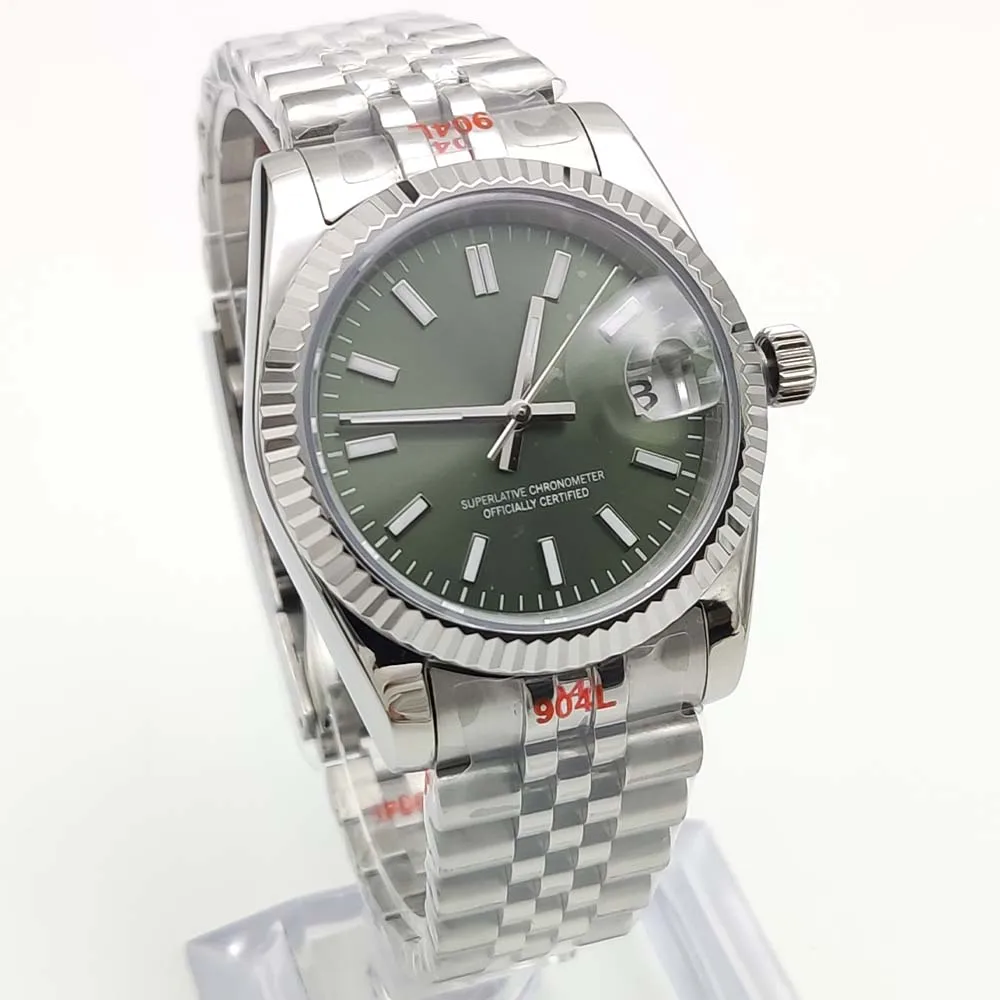
Finding Your Perfect Match: A Decision Framework
Choosing between classic and minimalist dress watches becomes easier when you assess your personal preferences and lifestyle needs. Consider these key factors to determine which style might better suit you:
1. What’s your general fashion approach?
– Do you prefer traditional, timeless clothing with classic proportions?
– Or do you gravitate toward contemporary, clean-lined, or minimalist fashion?
Your overall style aesthetic should find harmony with your watch choice.
2. What’s your typical daily attire?
– If you wear formal business attire daily, either style works well, though classic may feel more aligned with traditional suiting.
– For business casual or creative professional environments, minimalist designs often integrate more seamlessly.
3. For what occasions will this watch primarily be worn?
– Special occasions only (weddings, formal events): Consider classic styling
– Daily wear across various settings: Minimalist may offer more versatility
– Specific business settings: Consider the prevailing aesthetic of your industry
4. How important is horological tradition to you?
– If you value watchmaking heritage and traditional craftsmanship: Classic designs showcase these elements more explicitly
– If you prioritize contemporary design principles and clean aesthetics: Minimalist approaches will likely resonate more
5. What other accessories do you typically wear?
– Traditional cufflinks, tie bars, and leather goods pair naturally with classic watches
– Modern, geometrically-inspired, or minimal accessories complement minimalist timepieces
6. What speaks to you emotionally?
Beyond all practical considerations, which aesthetic creates a stronger emotional connection when you see it on your wrist? This personal resonance often proves most important in long-term satisfaction.
The analysis of classic versus modern dress watches explores these factors in greater depth, helping you align your choice with both practical needs and personal preferences.
Beyond Style: Universal Qualities of a Great Dress Watch
Regardless of whether you choose a classic or minimalist aesthetic, certain fundamental qualities determine the overall excellence of any dress watch:
Movement Quality and Reliability
The heart of any fine timepiece is its movement. Whether mechanical or quartz, the movement should demonstrate accuracy, reliability, and appropriate finishing for its price point. In mechanical watches, look for smooth winding action and consistent timekeeping.
Proportional Harmony
A well-designed dress watch maintains perfect proportions between case diameter, thickness, dial elements, and your wrist size. The watch should appear balanced when viewed from any angle, with no single element dominating inappropriately.
Case Finishing
Examine the case finishing under different lighting conditions. Polished surfaces should be mirror-like without distortion, while brushed finishes should show consistent, even patterning. The transition between different finishes should be crisp and deliberate.
Comfort During Extended Wear
A proper dress watch should become almost unnoticeable on the wrist during wear. Case edges should be smooth, the case back should sit comfortably against your wrist, and the overall weight should feel substantial but not burdensome.
Strap Quality
The strap or bracelet significantly impacts both comfort and appearance. Look for genuine leather with clean stitching, proper lining, and comfortable flexibility. On bracelets, links should articulate smoothly with tight tolerances.
Crystal Clarity
The crystal—whether sapphire, mineral, or acrylic—should offer excellent clarity and appropriate distortion-free viewing from all angles. Sapphire crystals provide superior scratch resistance for daily wear.
Appropriate Water Resistance
While dress watches aren’t diving instruments, a minimum of 30 meters water resistance provides essential protection against everyday moisture exposure from hand washing or unexpected rain.
These qualities transcend stylistic preferences and form the foundation of any worthwhile dress watch investment. Classic manual wind watches often exemplify these universal qualities while maintaining traditional aesthetic principles.
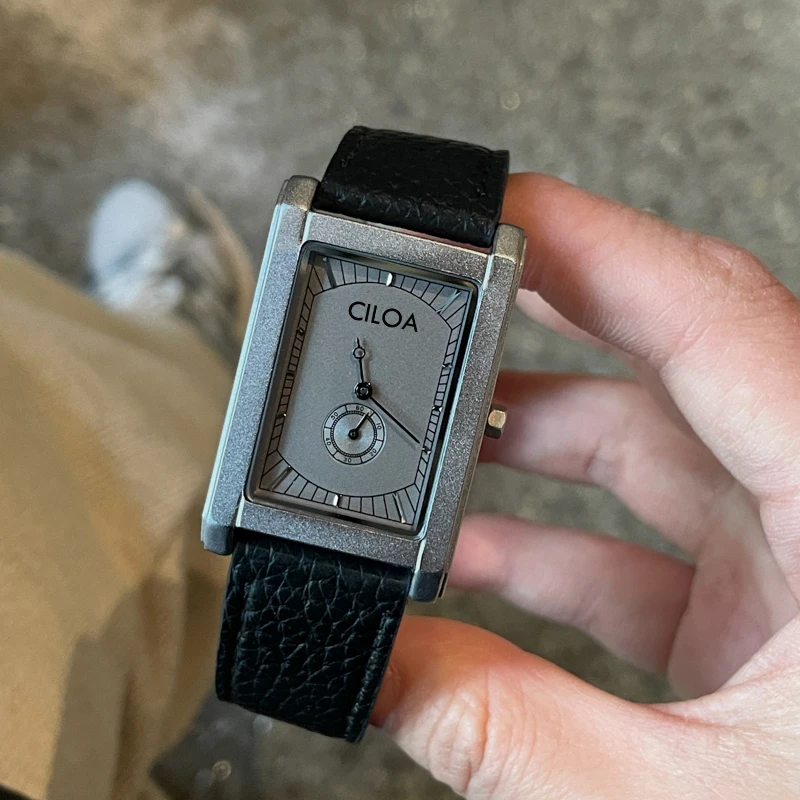
The Middle Ground: Hybrid Designs That Blend Classic and Minimalist Elements
The distinction between classic and minimalist dress watches isn’t always clear-cut. Many compelling contemporary designs occupy a thoughtful middle ground, incorporating elements from both traditions to create watches with broad appeal and versatility.
These hybrid approaches typically maintain the clean overall aesthetic of minimalist design while incorporating subtle traditional elements that add character and refinement. The result offers “the best of both worlds”—contemporary versatility with touches of horological heritage.
Common hybrid design features include:
- Clean dials with minimal text but subtle texture or pattern
- Simple baton indices with delicately faceted edges rather than plain sticks
- Traditional hand shapes executed in streamlined, modern proportions
- Classic case shapes with updated proportions and finishing techniques
- Thoughtful use of negative space combined with one or two traditional elements
Many established watchmakers have embraced this middle path, creating collections that respect their heritage while acknowledging contemporary design sensibilities. This approach often results in watches with exceptional versatility that appeal to admirers of both aesthetics.
For those intrigued by designs that bridge these styles, open heart automatic watches offer an interesting case study. These timepieces often combine traditional movement architecture with contemporary case and dial design, creating distinctive timepieces that defy simple categorization.
Classic Automatic Dress Watches, Day Date Automatic Watches, Perpetual Calendar Automatic Watches
Price range: $540.60 through $574.60 Select options This product has multiple variants. The options may be chosen on the product pageClassic Automatic Dress Watches, GMT Automatic Watches, GMT Pilot Watches
Price range: $1,240.86 through $1,463.33 Select options This product has multiple variants. The options may be chosen on the product pageAutomatic Skeleton Watches, Open Heart Automatic Watches
$98.36 Select options This product has multiple variants. The options may be chosen on the product pageClassic Automatic Dress Watches, Thin Automatic Dress Watches
$437.64 Select options This product has multiple variants. The options may be chosen on the product pageClassic Manual Wind Watches, Manual Wind Dress Watches
Price range: $425.50 through $462.50 Select options This product has multiple variants. The options may be chosen on the product page- $104.12 Select options This product has multiple variants. The options may be chosen on the product page
Care and Maintenance: Preserving Your Dress Watch’s Elegance
Proper care ensures your dress watch—whether classic or minimalist—maintains its beauty and functionality for years to come:
Regular Cleaning
– Wipe the case and crystal with a soft, lint-free cloth regularly to remove oils and smudges
– For polished cases, use a microfiber cloth specifically designed for delicate surfaces
– Clean between lugs and bracelet links occasionally with a soft brush to remove accumulated debris
Proper Storage
– Store unworn watches in a watch box or watch roll to prevent dust accumulation and scratches
– Keep watches away from direct sunlight to prevent potential dial fading
– For extended storage, consider silica gel packets to control humidity
Service Schedule
– Mechanical watches should receive professional service every 3-5 years
– Even quartz watches benefit from periodic inspection of seals and batteries
– Address any moisture ingress immediately to prevent damage
Strap Care
– Leather straps require special attention:
– Remove moisture promptly with a dry cloth
– Allow straps to air dry naturally if they become wet
– Consider a rotation of straps to extend their lifespan
– Apply leather conditioner occasionally (specific to watch straps)
Daily Handling
– Wind and set watches away from tabletops to prevent drops if they slip
– Always operate crowns gently and with intention
– For watches without screw-down crowns, avoid submerging in water
Special Material Considerations
– Gold cases benefit from occasional gentle cleaning with mild soap and water
– Avoid exposing leather straps to chemicals, including perfumes and lotions
– For watches with polished bezels, be mindful of potential desk diving scratches
By following these care guidelines, your dress watch will continue to shine as a reflection of your personal style, regardless of whether you’ve chosen classic ornamentation or minimalist restraint.
Personal Style Considerations: Finding the Right Expression
Your watch does more than tell time—it communicates something about who you are. When deciding between classic and minimalist dress watches, consider how each style aligns with your personal identity and self-expression:
Self-Reflection Questions:
– Does your personal style lean more toward timeless tradition or contemporary minimalism?
– Do you find yourself drawn to details and craftsmanship, or to clean simplicity and proportion?
– What qualities do you most want to project professionally: established tradition or modern thinking?
– When you imagine your ideal self in formal attire, what type of watch completes that image?
The beauty of personal style is that there are no wrong answers—only choices that feel more or less authentic to you. Many watch enthusiasts find themselves drawn to both aesthetics for different reasons or occasions, leading them to build collections that include examples of each.
If possible, try on examples of both styles before making a decision. Pay attention not just to how the watch looks on your wrist, but how it makes you feel when wearing it. The emotional connection to a timepiece often proves just as important as its objective qualities.
Remember that watches serve as both functional tools and expressions of personal taste. The right choice is ultimately the one that resonates with your aesthetic sensibilities while meeting your practical needs—whether that means embracing tradition, celebrating minimalism, or finding your perfect position somewhere along the spectrum between them.
Final Thoughts: Elegance Across Eras
Throughout our exploration of classic and minimalist dress watches, we’ve seen how two distinct design philosophies approach the same fundamental goal: creating a refined timepiece appropriate for formal occasions. Each takes a different path to elegance—one through rich detail and historical reference, the other through restraint and perfect proportion.
Classic dress watches celebrate watchmaking heritage through ornate detailing, traditional styling, and visual depth. Their timeless appeal connects wearers to generations of horological tradition while providing visual reward upon close inspection. These pieces shine particularly bright in traditional formal settings where their refined execution harmonizes with classic formal attire.
Minimalist dress watches find beauty in simplicity and clean design. Their contemporary aesthetic offers exceptional versatility and modern relevance, often transitioning seamlessly between formal and smart-casual environments. These watches speak to an appreciation for essential form and thoughtful restraint.
Whether you choose ornate tradition or clean minimalism depends less on absolute superiority and more on personal resonance—which aesthetic speaks more clearly to your sensibilities, lifestyle, and self-expression. Many enthusiasts eventually find room in their collections for both approaches, appreciating each for its distinct virtues.
Whichever direction you choose, prioritize quality execution, proper proportion, and genuine craftsmanship. A well-made watch in either style will serve faithfully as both a practical instrument and a personal statement for years to come. After all, true elegance transcends specific design trends—it’s found in the harmony between form, function, and the individual who wears it.

